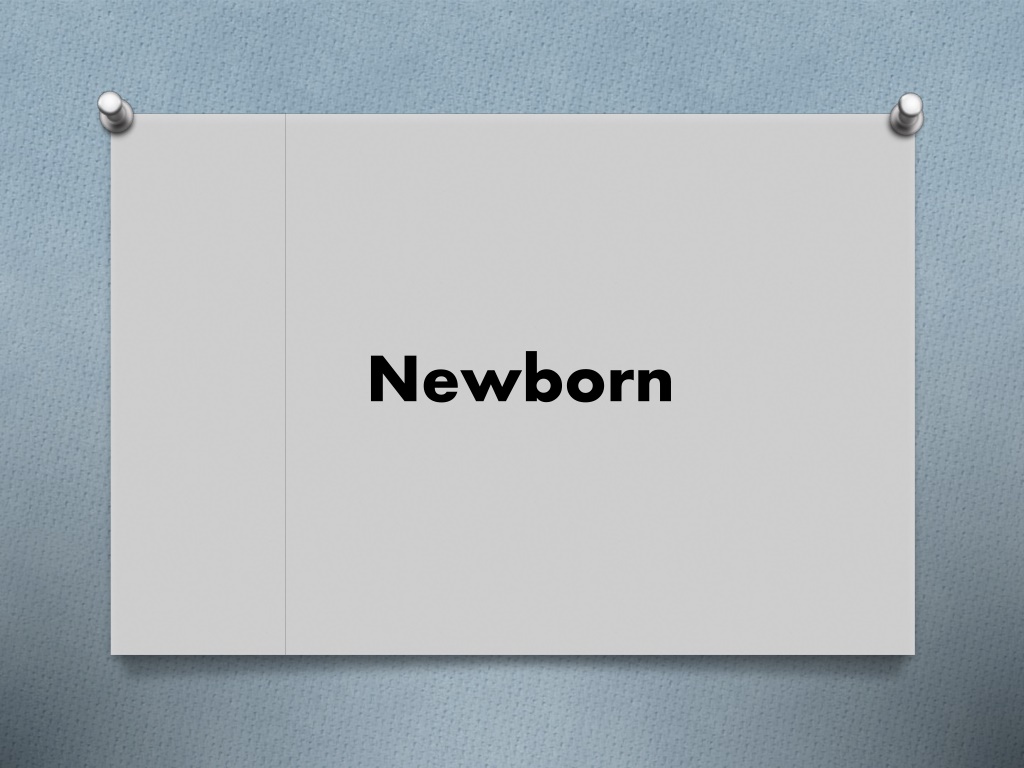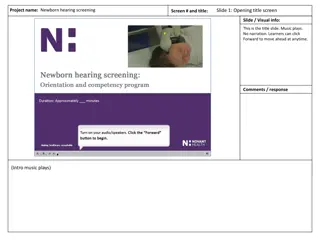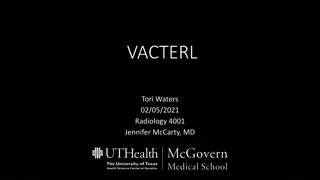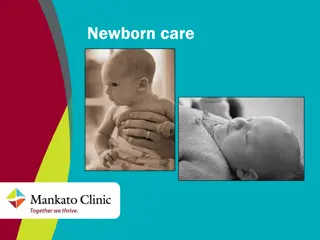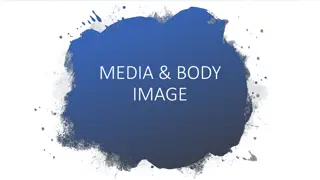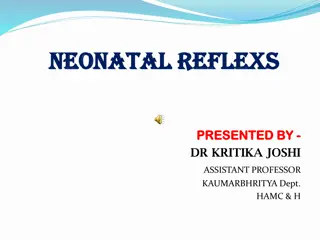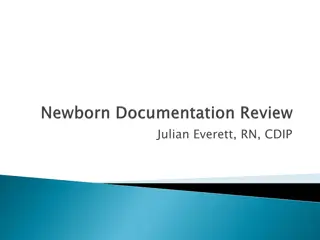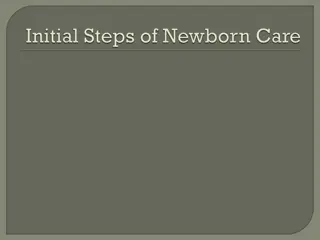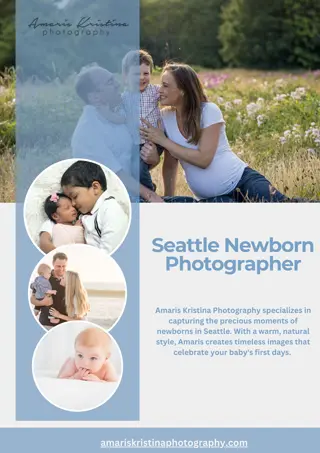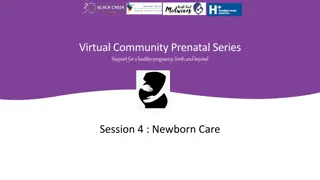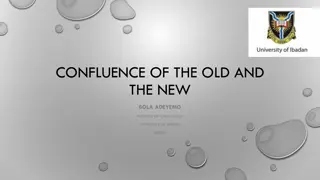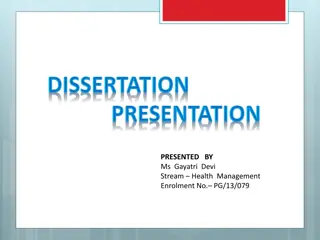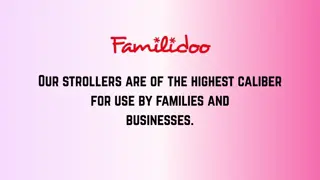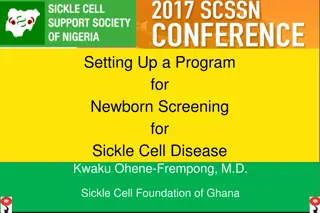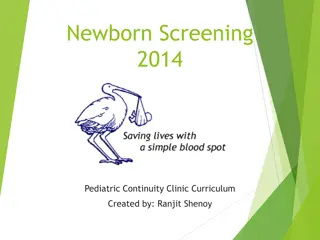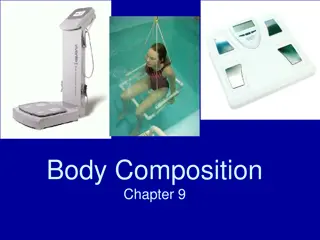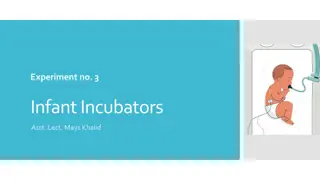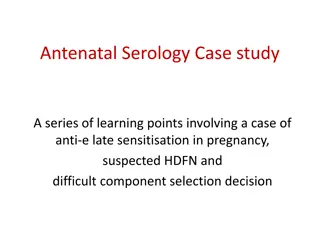Understanding Newborn Characteristics and Body Features
Explore the unique characteristics of newborns such as floppy ears, misshaped head, and swollen scalp. Learn about fontanels, baby measurements, facial features like dark eyes and a short nose. Discover common newborn marks, the newborn body including lanugo and umbilical cord, skin features, foot details, breathing patterns, and more. Gain insights into the fascinating world of newborn development.
Download Presentation

Please find below an Image/Link to download the presentation.
The content on the website is provided AS IS for your information and personal use only. It may not be sold, licensed, or shared on other websites without obtaining consent from the author. Download presentation by click this link. If you encounter any issues during the download, it is possible that the publisher has removed the file from their server.
E N D
Presentation Transcript
Newborn Characteristics O Floppy Ears pressed against head O Misshaped Head/Flat Forehead O Scalp Swollen, Cradle Cap O Hair Full head or none O Large Head size of baby s total
Newborns Head O Fontanels (soft spots) skull bones not joined together, allows baby s head to be delivered and head to grow. Fontanel on top is diamond shaped, which closes at 18 months. Fontanel in top back of head is triangle shaped, which closes at 6 weeks.
Baby Measurements O Average Weight 7 to 7 lbs. O Average Length 20 21 inches
Babys Face O Large, dark grayish blue or brown eyes. It takes up to 1 year for eye color to be permanent. O Short flattened nose O Eyes get drops inserted to prevent infections O Receding chin from birth canal travel O Fat cheeks due to fluid accumulation
Baby Marks O Forceps marks called stork bites, that fade in childhood O Milia baby whiteheads, plugged immature oil gland that disappear in several weeks
Babys Newborn Body O Lanugo is tiny soft downy white hair on body will go away within a few weeks. O Bulging Abdomen rounded and sticking out O Umbilical Cord clamped in two placed, keep diapers below cord stump.
Babys Skin O Botchy patches, wrinkled skin, covered with white cheesy-like material vernix caseosa that helps protect baby s skin O Bowed legs, cold discolored toes/fingers, or rash if gets too hot, skin is sensitive to temperature changes
Baby Foot O Band around ankle matches mom s wrist band, footprints taken O Vitamin K shot to help baby s blood clot O Temperature monitored
Babys Breathing O Baby s take breaths using stomach muscles with short pauses. Rate of breathing is 30- 60 times a minute. Heart rate is rapid 120-160 times a minute.
Babys Senses O Bulb syringe is used to clear nose, ears, & mouth
Jaundice O Yellowish discoloration on skin and white parts of eyes, common condition, normally disappears couple of days after birth.
Apgar Score O One minute after birth, Apgar test is done to assess the infant s overall condition.
Apgar Score O Heart Rate (Pulse) O Respiratory Effort (Breathing) O Activity (Muscle Tone) O Reflex Response (Grimace) O Appearance (Good Color) O Nurses take scores at 1 minute then again after 5 minutes O Scores 6 10, perfect score is 10
Newborn Care O Delivery Room Newborn Care mucus cleared from nose, mouth, ears O Umbilical Cord cut/clamped twice near navel O Baby s weight & length/height measured O Baby Apgar test given O Baby cleaned, dried, dressed, wrapped in blanket
Newborn Care O Silver Nitrate solution eye drops in eyes for protection from infections O Vitamin K shot to help blood clotting
Reflexes of Newborn Infant O Sucking begins with the movement in response to stimulation, even without stimulation, it occurs during sleep
Reflexes of Newborn Infant O Rooting Rooting is action baby makes when searching for breast/food, when cheek is stroked, baby turns head to that direction O Goes away in 3 to 4 months
Reflexes of Newborn Infant O Grasp or Palmar Grasp or Palmar reflexes when baby clenches his fist when pressure is placed in the palm of baby s hand. O This reflex goes away in 3 or 4 months
Reflexes of Newborn Infant O Moro/Startle Moro/Startle is when baby is suddenly startled by a loud noise or sudden movement. The baby s head tilts back, arms & legs are extended with fingers widespread. O Lasts 4 to 6 months
Reflexes of Newborn Infant O Stepping/Walking Stepping/Walking is when newborn is held upright underneath his arms, with his feet resting on a surface. His legs start a stepping action. It usually goes away in 2 to 4 months.
Reflexes of Newborn Infant O Babinski Babinski reflex is rubbing down the bottom of the foot and the toes spread outward. O This reflex goes away in 9-12 months
Reflexes of Newborn Infant O Asymmetric tonic neck Asymmetric tonic neck reflex is when the infant head is turned to one side, arm & leg extend to that side, and opposite arm & leg flex. O This disappears by 3-4 months.
Reflexes of Newborn Infants O Swimming Swimming reflex is ability to move arms & legs while in water. Goes until 6 months.
Newborns O Require continuous care and monitoring. O Newborns need food, love, sleep, exercise, cleanliness, warmth, clothing, medical care, stimulation and attention.
Newborns Power Point Notes: The newborn has the following characteristics: The Average Baby Measurements at birth are: Average Weight is ______________. Average Length/Height is ________________. The baby s face has a flattened _________, eyes that get Silver Nitrate Solution _______________ in their eyes to prevent infections. The baby has a receding chin and ___________ cheeks due to fluid accumulation. Forceps marks are called _________ _________ that fade in childhood. _______ are baby whiteheads. The body has tiny soft downy white hair all over it called ___________. The bulging abdomen is rounded and somewhat sticking outward. The ___________ _________ is clamped in two places. Keep baby s ______________ below the cord stump. Baby s skin is wrinkled, botchy, and covered with cheesy-like material called __________ ___________. The baby s foot has footprints taken, ____________ shot for clotting the blood. Baby has fast breathing rates and rapid heart rates of _____ to ____ times per minute. The baby s senses are cleared by a ________ __________ that is used to clean out the nose, ears, & mouth. The testing of the infant s overall condition right after birth is called __________ Score. The perfect score is a __________. The score is based on heart rate, respiratory breathing, muscle tone, reflexes, and _____________. The reflex of a newborn infant is the sucking reflex, the ____________ reflex that a baby turns its head toward food.
The ___________ reflex is when the infant clenches the fist when pressure is placed in the palm of the babys hand. The _________ reflex is when a baby is suddenly startled or a sudden movement. The ____________ reflex is holding the infant upright and his feet are resting on a surface, then the infant begins a stepping motion. The ___________ reflex is the rubbing on the bottom of the foot, making the toes spread outward. The _________________ is when the infant head is turned to one side, arm & leg extends to that side, then the opposite arm and leg flex. The __________ reflex is the ability to move arms and legs while in the water. This disappears within 6 months. ____________ require continuous care and monitoring.
ANSWER SHEET FOR NOTES: Newborns Power Point Notes: The newborn has the following characteristics: floppy ears, misshaped head, flat forehead, swollen scalp, cradle cap, hair or no hair, large head about size of baby s total weight, fontanels (soft spots), short flattened nose, receding chin, fat cheeks The Average Baby Measurements at birth are: Average Weight is 7 to 7 lbs.. Average Length/Height is 20 to 21 inches. The baby s face has a flattened nose, eyes that get Silver Nitrate Solution drops in their eyes to prevent infections. The baby has a receding chin and fat cheeks due to fluid accumulation. Forceps marks are called stork bites that fade in childhood. Milia are baby whiteheads. The body has tiny soft downy white hair all over it called lanugo. The bulging abdomen is rounded and somewhat sticking outward. The umbilical cord is clamped in two places. Keep baby s diaper below the cord stump. Baby s skin is wrinkled, botchy, and covered with cheesy-like material called vernix caseosa. The baby s foot has footprints taken, vitamin K shot for clotting the blood. Baby has fast breathing rates and rapid heart rates of 120 to 160 times per minute. The baby s senses are cleared by a bulb syringe that is used to clean out the nose, ears, & mouth. The testing of the infant s overall condition right after birth is called Apgar score. The perfect score is a ten. The score is based on heart rate, respiratory breathing, muscle tone, reflexes, and appearance. The reflex of a newborn infant is the sucking reflex, the rooting reflex that a baby turns its head toward food. The grasp/palmar reflex is when the infant clenches the fist when pressure is placed in the palm of the baby s hand. The moro/startle reflex is when a baby is suddenly startled or a sudden movement. The stepping/walking reflex is holding the infant upright and his feet are resting on a surface, then the infant begins a stepping motion.
The Babinski reflex is the rubbing on the bottom of the foot, making the toes spread outward. The Asymmetric tonic neck reflex is when the infant head is turned to one side, arm & leg extends to that side, then the opposite arm and leg flex. The swimming reflex is the ability to move arms and legs while in the water. This disappears within 6 months. Newborns require continuous care and monitoring.
